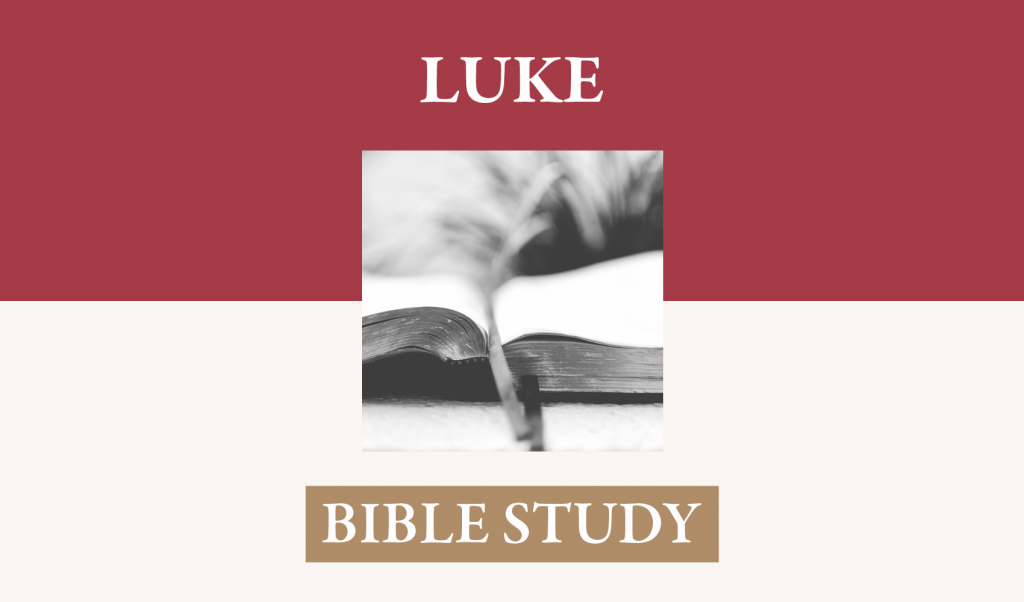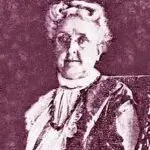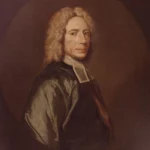Lesson Focus: This lesson is about Jesus’ authority over sickness and death.
Jesus Has Authority: Luke 7:1-10.
[1] After he had finished all his sayings in the hearing of the people, he entered Capernaum. [2] Now a centurion had a servant who was sick and at the point of death, who was highly valued by him. [3] When the centurion heard about Jesus, he sent to him elders of the Jews, asking him to come and heal his servant. [4] And when they came to Jesus, they pleaded with him earnestly, saying, "He is worthy to have you do this for him, [5] for he loves our nation, and he is the one who built us our synagogue." [6] And Jesus went with them. When he was not far from the house, the centurion sent friends, saying to him, "Lord, do not trouble yourself, for I am not worthy to have you come under my roof. [7] Therefore I did not presume to come to you. But say the word, and let my servant be healed. [8] For I too am a man set under authority, with soldiers under me: and I say to one, ‘Go,’ and he goes; and to another, ‘Come,’ and he comes; and to my servant, ‘Do this,’ and he does it." [9] When Jesus heard these things, he marveled at him, and turning to the crowd that followed him, said, "I tell you, not even in Israel have I found such faith." [10] And when those who had been sent returned to the house, they found the servant well. [ESV]
[1-5] Luke supplies a transition into the account of the centurion: from the plain located near Capernaum, Jesus journeys into the town. The central figure is the centurion who was in charge of one hundred men. This centurion’s nationality is unclear, though Luke 7:9 makes clear that he is not Jewish. The problem is that the centurion has a slave near death. Matthew 8:6 tells us that the slave is paralyzed, but Luke lacks such detail. Rather, Luke stresses that his life is hanging by a thread. The slave is respected or highly regarded by the centurion, but it is hard to be sure of the exact force of valued. If the centurion regarded the servant as an asset or possession, valued is the better translation of the Greek word. But if the centurion was the moral, sensitive man that the account suggests, then “esteemed” may be better. The centurion’s hesitation in approaching Jesus may have been because of his concern for his slave, as well as his being a Gentile. The situation is serious, and so the centurion decides to take action. He has heard about Jesus’ ministry, including, given the nature of the request, miraculous works like those in 4:31-44 and 5:12-26. But as a Gentile, the centurion may have been hesitant about asking a Jewish teacher for aid, so he sent emissaries to make the request for him. These emissaries are described as elders of the Jews, which probably refers to Jewish civil leaders. Luke indicates three things in referring to the Jewish emissaries. First, he shows how Jews and Gentiles can get along and have respect for one another, a point of great importance for his Gospel. Second, by using Jews, Luke indicates his audience and perhaps his own ethnic origin, since this term is commonly used only by Gentiles to refer to Jews. Third, the nonappearance of this Gentile figure may well indicate the example of a man who exercises faith without actually having seen Jesus. The emissaries make a simple request. They wish Jesus to come and cure the slave. This Gentile soldier believes that Jesus has the power to restore his slave, and so he appeals for the teacher’s aid. The emissaries do not just bring the centurion’s request, but they also lobby on his behalf. They attempt to persuade Jesus to come and aid this soldier. The text indicates emphatically the length to which these Jews labored on behalf of this Gentile. Earnestly indicates a seriousness in their efforts. The emissaries implore Jesus by offering a commendation. They describe the centurion as worthy of benefiting from Jesus’ power. The elders’ confidence contrasts with the centurion’s own evaluation of himself sent through the friends who come later. They will note that he himself does not feel worthy of a visit to his house [6]. Such humility Jesus commends later [14:7-11]. The explanation why the elders think this man is worthy of the Jewish teacher’s attention follows: for he loves our nation. Here is a Gentile who respects Jewish worship and has affection for the people. His affection is evident in the elders’ second point: he built our synagogue.
[6-10] Jesus accepted the elders’ invitation showing that His compassion has no racial limits. As word reached the centurion that Jesus was coming, he sent a second delegation to meet Jesus. The delegation meets Jesus when He is not far from the house. Jesus should not trouble Himself to enter the house because the centurion recognizes that he is not worthy of such a personal visit. Jesus is addressed with the respectful, Lord, a term of courtesy for any significant figure, which here would be equal in force to saying “Rabbi,” since a Gentile is speaking, not a Jew. The key to the verse is the centurion’s declaration that he is not worthy to have Jesus step into his house. The centurion trusts in Jesus’ authority. He recognizes that Jesus has access to God and that all this powerful figure need do is to speak and healing will occur. He has faith that Jesus’ command is all that is needed. The word of Jesus, given unseen and from a distance, can deliver the precious servant from his illness. It is a profound insight that the centurion possesses and expresses. Even though physically absent, Jesus can show His presence effectively. The lesson is a key one for Luke’s readers, who no longer have Jesus’ physical, visible presence. The centurion knows that Jesus’ word will be obeyed, even from a distance, and the centurion graphically portrays his understanding with a three-part illustration. The centurion’s illustration reveals his understanding of Jesus. The centurion makes a minor-to-major comparison. Surely if he, as a member of the government’s army, is obeyed, so also the spiritual forces that are subject to Jesus will obey His word. The centurion is under another’s authority, but nonetheless is in charge of his own forces. The picture parallels Jesus, who ministers for God, serving Him with a clear sphere of authority. Just as the soldiers and servant obey the centurion, so will those forces afflicting the centurion’s slave obey Jesus. Jesus’ work of healing has been reported to the centurion, and he accepts the testimony as true. Thus, a soldier of the world’s most significant army compliments Jesus’ authority and equates it to authority within a military unit. Jesus’ response to the request is one of surprise and commendation, especially for the centurion’s confident declaration of Jesus’ authority. Jesus’ reaction is emotional: He is amazed at the soldier. Jesus, portrayed in very human terms, wonders at the quality of a Gentile’s response to Him. He is a spectator, commenting to other spectators. This is one of only two texts where Jesus is said to be amazed [see Mark 6:6]. The centurion’s faith leads Jesus to address the crowd. Jesus specifically addresses the multitudes who follow Him. His action and remarks say, “Learn from this.” In the paragraph’s key saying, Jesus commends the Gentile’s faith as something not found in Israel. The faith pictures what will often be the case in Acts: Gentiles respond to Jesus while many Jews reject Him. What is it that Jesus commends as unique? It cannot be the centurion’s recognition of miraculous power, for that had drawn wide response [4:40-41]. It must be the unique faith which recognizes Jesus’ authority and the power of His word, not only over illness but also in the face of His physical absence and distance. Magical presence or touch is not required for healing, only the power of Jesus’ command and will. The centurion recognizes that God’s power works through Jesus without spatial limitations. Jesus is entrusted with great authority. Humility mixed with deep faith describes what Jesus praises. The soldier approaches the man of God on the proper terms. In the commendation, Jesus makes an indirect call to trust Him in a similar way. The question in effect is, “Will you trust as the centurion has?” Such faith brings Jesus’ approval. The servant’s healing is reported without any indication of Jesus’ command to be healed. The focus is the centurion’s faith, not the healing. Of course, the healing demonstrates Jesus’ authority, since the event reflects the authority that the centurion described in 7:8. The report simply notes that when the messengers returned, the servant was healthy.
SUMMARY. The healing of the centurion’s servant foreshadows the expansion of Jesus’ ministry to the nations. The non-Jewish centurion has encountered the ministry of this Jewish teacher and has sought His aid. He has heard of Jesus’ work and understands the power and authority that the teacher possesses from God. He senses that he is unworthy of receiving Jesus’ help. Jesus commends his insight as unique and offers the faith of this foreign soldier as an example to all. His combination of humility, dependent request, and trusting awareness of God’s power is the essence of faith. The respect that this man received from Jews is a submotif in the account. Surely Jews and Gentiles can get along and share involvement with Jesus. Race makes no difference to God. This theme will receive more comprehensive treatment in Acts, but here the groundwork is laid to show that racial-religious distinctions are not part of the gospel when one responds to Jesus. Above all, what is clear from this account is that Jesus has authority from God that extends over space, distance, and disease. He is gifted by God to a high degree. The healing He gives reveals the authority that He has to reverse the condition of those in need. He need not be physically present to respond. And anyone can share in the benefits that Jesus offers, if faith is exercised. The centurion’s faith is an example that should not stand alone. Luke asks his reader to have the faith of the centurion.
Jesus Shows Compassion: Luke 7:11-15.
[11] Soon afterward he went to a town called Nain, and his disciples and a great crowd went with him. [12] As he drew near to the gate of the town, behold, a man who had died was being carried out, the only son of his mother, and she was a widow, and a considerable crowd from the town was with her. [13] And when the Lord saw her, he had compassion on her and said to her, "Do not weep." [14] Then he came up and touched the bier, and the bearers stood still. And he said, "Young man, I say to you, arise." [15] And the dead man sat up and began to speak, and Jesus gave him to his mother. [ESV]
[11-12] Luke connects this event to the previous one only in very general terms: soon afterward. Jesus comes into Nain with his disciples and other observers. Mentioned only here in the Bible, Nain was a little town and appears to be located at the site of the modern town of Nein, which now has about two hundred residents. Located in Galilee three miles west of Endor, twenty miles southwest of Capernaum, and six miles southeast of Nazareth. Jesus approached the city and drew near the city gate, which normally served as a defensive fortification, though this town was so small that the entrance was probably decorative. As Jesus entered, He observed a funeral procession. Such funerals would proceed out of the city gate or boundary to bury the person outside the city walls, where family cemeteries were located. Funerals usually occurred at the end of the day and often on the day of the death. This death involved an only son, a detail that Luke frequently notes. The mother was also a widow, something that may have been indicated by her clothing or the absence of a husband in the procession. The emotion in verse 12 carries deep pathos. The town shares in the grief as they gather with her. Such mourning was seen as an act of love by one’s neighbors and was especially significant where a widow was involved. A sad setting greets Jesus in Nain.
[13-15] Jesus takes the initiative and addresses the woman as He prepares to deal with her tragic situation. He extends to her a word of comfort and asks her to stop crying. Such weeping for the dead is common in the Bible. Jesus’ comfort will include more than others can give to her, and He will offer more than words. Luke describes Jesus’ reaction as the expression of His compassion. To set the scene, it is important to appreciate the nature of burial customs in Judaism. First, a person was not prepared for burial until death was certain. Second, a family tore their garments as a sign of mourning and closed the eyes of the corpse to show that death had come. Third, to prevent deterioration the body was anointed and buried quickly. Generally not kept overnight in the house, the corpse was wrapped in cloth on a burial plank, not in a coffin, for all to see. Thus, as Jesus approached the woman, the funeral procession was moving out of town, with the mourners present to bury the visible but covered body. In a normal funeral, the service would end with the Shema [Deut. 6:4] and the family would mourn for thirty days. The funeral procession was emotional, and the widow’s tears in such a setting are quite understandable. But Jesus’ action will reverse the mood. Jesus moves to justify His words of comfort. He moves away from the widow and approaches the open plank. As He arrives, Jesus touches the bier, an act that would bring defilement according to the law. Upon Jesus’ touching the plank, the pallbearers stopped. In fact, Jesus may have touched the plank to get them to stop. Jesus addresses the dead young man directly, an act that would be humorous or tragic if we were not dealing with a uniquely empowered man of God. Jesus calls to the dead man with personal authority when He says, Young man, I say to you, arise. Jesus confronts death and illustrates the extent of His authority. Three simple statements mark the healing. First, the dead man sat up. Two terms are key. Referring to the man as the dead man adds a note of contrast to stress the healing, since dead people do not usually move! And the reference to sat up makes use of a term that appears elsewhere in the New Testament only at Acts 9:40, where it refers to Tabitha’s resuscitation by Peter. In fact, this medical term is often used extrabiblically to describe the sitting up of someone who was formerly incapacitated by illness. Jesus’ effortless call to rise up contrasts with Old Testament examples of resuscitation. Elijah stretched himself three times over the boy he revived [1 Kings 17:21], and Elisha touched his child with his staff and then later lay over him [2 Kings 4:35]. Resuscitation comes easy to this agent of God. Second, when the man sat up, he began to talk, a point that indicates a return to life. Again, the response is somewhat different from the Old Testament parallels, where in Elijah’s case no response is discussed and in Elisha’s case where the boy sneezed seven times. Finally Jesus gave the boy back to his mother. The relationship between mother and son – broken by death – is restored by Jesus.
Jesus Deserves Praise: Luke 7:16-17.
[16] Fear seized them all, and they glorified God, saying, "A great prophet has arisen among us!" and "God has visited his people!" [17] And this report about him spread through the whole of Judea and all the surrounding country. [ESV]
[16-17] The reaction to the display of God’s power yields the normal response of fear. Luke often expresses the emotional reaction to God’s work in terms of awe and respect. Such respect for God’s work reflects an awareness of the event’s uniqueness and honors the majesty of the one who has worked. Though fear was present, one could not look upon such an event without comment. The crowd responded first to acknowledge the healer and then to acknowledge the God who sent Him. In recognizing such events, they glorified God, another common Lucan description of a response to God’s activity. In calling Jesus a great prophet, the crowd recognizes the parallel between Jesus’ work and that of Elijah and Elisha. But their confession does not describe the great eschatological prophet to come. Neither is there anything messianic in this confession. Luke is careful here as he indicates how the populace assessed Jesus. According to the witnessing crowd, God has raised up a great prophet which recalls the great prophets of old and points to the renewal of God’s miraculous activity for His people. They are no more specific than that. In speaking of God’s activity, the crowd speaks of God’s visitation, a term that Luke has used already to express the visit of the Messiah [Luke 1:68,78]. Visitation refers to God’s gracious activity for His people as He utilizes His power on their behalf. Such activity would be an encouragement to people who perceived themselves to be largely absent from God’s miraculous activity in recent times. The expression betrays the people’s excitement as they reflect on what is happening. Clearly, Jesus is sent from God to them. The Elijah motif makes one other key point when it is seen as a theme in Luke: through Jesus, God is coming to the aid of the defenseless. Those who feel that they are on the outside or who feel abandoned can sense in Jesus the invitation to experience God’s renewed presence and blessing. God is visiting His people again, and those who realize his presence and their need can sense that God has chosen to engage them by His grace through Jesus. As is his style, Luke closes with a note about how the news spread widely concerning Jesus. Here, the news went out into Judea which refers to the entire region of Judea and Galilee.
Summary. Jesus’ raising the widow of Nain’s son in Luke 7:11-17 demonstrates two essential qualities. First, Jesus demonstrates His compassion and willingness to reach out and meet the needs of those in distress. He takes the initiative in this account; He comforts the widow; He restores the boy to health. Second, great power is displayed with great ease. The comfort that He offers the widow is real, because He can overpower death’s nullifying effects. The extent of His authority reaches to the limits of personal existence. This account, then, represents Jesus’ most powerful display of His connection with God. The crowd concludes on the basis of Old Testament parallels that Jesus in a great prophet, a confession that raises Christological questions about who Jesus is. Luke will take advantage of this confession in the next section to pursue the issue of Jesus’ identity as reflected in His ministry. It is clear that He has prophetic gift, but is He the one to come, the one that John prophesied in 3:15-18? Does Jesus offer more to humanity than merely signaling God’s visitation? These are the questions that Luke now plants in the narrative. The resurrection of this young man offers answers in terms of power and praise.
Questions for Discussion:
1. Scripture records only two occasions on which Jesus was ‘amazed’ [Mark 6:6; Luke 7:9]. What about the centurion’s faith amazed Jesus? How can you apply the centurion’s example in your own life?
2. What do we learn about Jesus’ character and power from Luke 7:11-15?
3. How did the crowd respond to the miracle with the widow’s son? Why do you think they responded in this way? How do they describe Jesus? While true on the surface, how does their description fall short of who Jesus really is?
References:
Luke, Volume 1, Darrell Bock, Baker.
Luke, Philip Graham Ryken, REC, P&R Publishing.
Luke, Walter Liefeld, EBC, Zondervan.

















